I gelled on this for awhile, and I'll try my best to explain where I think he's coming from, though without reading the book, it will be at-best-conjecture.
First, technically, the increment you propose (or he proposed) isn't illegal; dereferencing it is. The standard allows you to advance a pointer to one-past the last element of the array sequence from which it is being sourced for valuation, but not for dereference. Change it to p = p + 4 and both are illegal.
That aside, the linear footprint of the array not withstanding, ar[2] has a type, and it is int[5]. If you don't believe that, consider the following, all of which is correctly typed:
int ar[5][5];
int (*sub)[5] = ar+2; // sub points to 3rd row
int *col = *sub + 2; // col points to 3rd column of third row.
int *p = col + 3; // p points to 5th colum of third row.
Whether this lands on ar[3][0] isn't relevant You're exceeding the declared magnitude of the dimension participating in the pointer-math. The result cannot legally be dereferenced, and were it larger than a 3-offset, nor could it be even legally evaluated.
Remember, the array being addressed is ar[2]; not just ar, and said-same is declared to be size=5. That it is buttressed up against two other arrays of the same ilk isn't relevant to the addressing currently being done. I believe Christoph's answer to the question proposed as a duplicate should have been the one selected for outright-solution. In particular, the reference to C99 §6.5.6, p8 which, though wordy, appears below with:
When an expression that has integer type is added to or subtracted
from a pointer, the result has the type of the pointer operand. If the
pointer operand points to an element of an array object, and the array
is large enough, the result points to an element offset from the
original element such that the difference of the subscripts of the
resulting and original array elements equals the integer expression.
In other words, if the expression P points to the i-th element of an
array object, the expressions (P)+N (equivalently, N+(P)) and (P)-N
(where N has the value n) point to, respectively, the i+n-th and
i−n-th elements of the array object, provided they exist. Moreover, if
the expression P points to the last element of an array object, the
expression (P)+1 points one past the last element of the array object,
and if the expression Q points one past the last element of an array
object, the expression (Q)-1 points to the last element of the array
object. If both the pointer operand and the result point to elements
of the same array object, or one past the last element of the array
object, the evaluation shall not produce an overflow; otherwise, the
behavior is undefined. If the result points one past the last element
of the array object, it shall not be used as the operand of a unary *
operator that is evaluated.
Sorry for the spam, but the bolded highlights are what I believe is relevant to your question. By addressing as you are, you're leaving the array being addressed, and as such walking into UB. in short, it works (usually), but is isn't legal.
